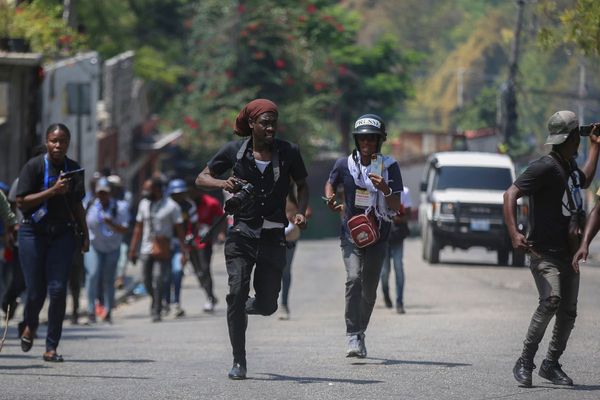
After two months of continual Iran-backed Houthi attacks on commercial vessels, the US and the UK have launched more than 100 strikes against the militant group’s positions across western Yemen.
Huge explosions were seen in Yemeni cities including Sana’a and Hodeidah in the early hours of Friday, with the US military saying 60 strikes were launched against 16 sites linked to the Houthis’ military operations.
Below, The Independent looks at how the attacks unfolded and what weapons were used in the strikes.
An overview
Lt General Alex Grynkewich, a senior Air Force commander overseeing forces in the Middle East, said in a statement that more than 100 precision-guided munitions were used to hit 60 targets at 16 Houthi locations in Yemen overnight.
The UK Ministry of Defence (MoD) revealed this morning that the Royal Air Force were responsible for hitting two of those sites.
“One was a site at Bani in north-western Yemen used to launch reconnaissance and attack drones,” the statement read. “A number of buildings involved in drone operations were targeted by our aircraft.
“The other location struck by our aircraft was the airfield at Abbs. Intelligence has shown that it has been used to launch both cruise missiles and drones over the Red Sea. Several key targets at the airfield were identified and prosecuted by our aircraft.”
What weapons were used?
James Heappey, the UK armed forces minister, revealed this morning that four Royal Air Force Typhoon fighters were used in the attack, supported by two Voyager air-to-air refuelling tanker aircraft.
The single pilot, twin-engine Typhoon jets are a mainstay of the RAF fleet. They fly at speeds of roughly 1,380 miles per hour (Mach 1.8) and as high as 55,000 feet, according to an RAF fact sheet
The Ministry of Defence (M0D) later confirmed that Paveway IV guided bombs had been used in the strikes. A source at RAF Northolt suggested to The Independent that 18 missiles had been used in the attacks.
An RAF fact sheet describes the 227kg warheads, which cost roughly £30,000 each, as having the “ability to engage targets in all types of weather with laser guidance for high terminal accuracy”.
Gen Alex Grynkewich said the US fired roughly 100 precision-guided missiles, inlcuding Tomahwaks, from warships and submarines in the region.
The US Navy’s Tomahawk Land Attack Missiles (TLAM), worth up to £1.5 million each, are low-flying cruise missiles capable of delivering a 450 kg conventional warhead hundreds of miles inland.
The bulk of the firepower will have come from US jets. The US has an aircraft carrier in the Red Sea, as well as several air bases in the region.

How did the attacks happen?
James Heappey, the UK Armed Forces minister, said the four Typhoons took off at 7.30pm on Thursday evening from RAF Akrotiri in Cyprus. The base is located on the southernmost tip of the island, about 150 miles from the Lebanese capital of Beirut.
Our source said that UK Prime Minister Rishi Sunak phoned Egyptian President Abdel Fattah El-Sisi on Thursday evening to request clearance for the Typhoons to fly over the eastern Mediterranean.
The crew then flew west of Israel before descending the Red Sea and carrying out strikes on the Houthi positions in western Yemen.
Mr Heappey said this morning that both targets were “successfully prosecuted”. The four Typhoons and two Voyagers safely returned to RAF Akrotiri at 3am.
Footage released by US and UK showed fighter jets and aircraft taking off from various locations on Thursday evening.
What targets were hit?
Footage released by the UK MoD shows strikes on Houthi positions in Yemen— (Ministry of Defence)
Gen Alex Grynkewich said the strikes hit “command and control nodes, munitions depots, launching systems, production facilities, and air defence radar systems”.
Our map above shows the exact locations of the strikes.
The MoD claimed the strikes had been a success and that particular care had been taken to minimise risk to civilians in the area.
“The detailed results of the strikes are being assessed, but early indications are that the Houthis’ ability to threaten merchant shipping has taken a blow,” a statement read.
How have the Houthis reacted?
A Houthi military spokesperson said 73 strikes had killed five of the group’s fighters and wounded six others.
These reports have not been confirmed.
Experts have warned that the Houthis are likely to claim the strikes killed civilians as part of its informational war against the US and the UK.
Houthi leader Abdul-Malik al-Houthi vowed to “confront American aggression” after the attacks.
Their Iranian backers have also called out the strikes.
Foreign ministry spokesperson Nasser Kanaani said: “These attacks are a clear violation of Yemen’s sovereignty and territorial integrity, and a breach of international laws.”
Russia, meanwhile, condmended the strikes and called for an urgent meeting of the United Nations Security Council on Friday to discuss the issue.







